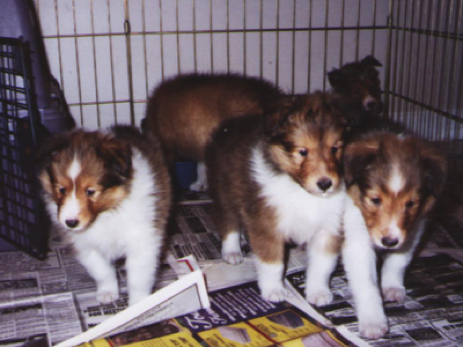
1. Remember that the animals you select for breeding today will have an impact on the breed for many years to come. Keep that thought firmly in mind when you choose breeding stock.
2. You can choose only two individuals per generation. Choose only the best, because you will have to wait for another generation to improve what you start with. Breed only if you expect progeny to be better than both parents.
3. You cannot expect statistical predictions to hold true in a small number of animals (as in one litter of puppies). Statistics only apply to large populations.
4. A pedigree is a tool to help you learn the good and bad attributes that your dog is likely to exhibit or re-produce. A pedigree is only as good as the dog it represents.
5. Breed for a total dog, not just one or two characteristics. Don't follow fads in your breed, because they are usually meant to emphasize one or two features of the dog at the expense of the soundness and function of the whole.
6. Quality does not mean quantity. Quality is produced by careful study, having a good mental picture of what you are trying to achieve, having patience to wait until the right breeding stock is available and to evaluate what you have already produced, and above all, having a breeding plan that is at least three generations ahead of the breeding you do today.
7. Remember that skeletal defects are the most difficult to change.
8. Don't bother with a good dog that cannot produce well. Enjoy him (or her) for the beauty that he represents but don't use him in a breeding program.
9. Use out-crosses very sparingly. For each desirable characteristic you acquire, you will get many bad traits that you will have to eliminate in succeeding generations.
10. Inbreeding is a valuable tool, being the fastest method to set good characteristics and type. It brings to light hidden traits that need to be eliminated from the breed.
11. Breeding does not "create" anything. What you get is what was there to begin with. It may have been hidden for many generations, but it was there.
12. Discard the old cliché about the littermate of that great producer being just as good to breed to. Litter mates seldom have the same genetic make-up.
13. Be honest with yourself. There are no perfect dogs (or bitches) no rare there perfect producers. You cannot do a competent job of breeding if you cannot recognize the faults and virtues of the dogs you plan to breed.
14. Hereditary traits are inherited equally from both parents. Do not expect to solve all of your problems in one
generation.
Breeding Basics-
Originally Posted 2009/Updated January 2021